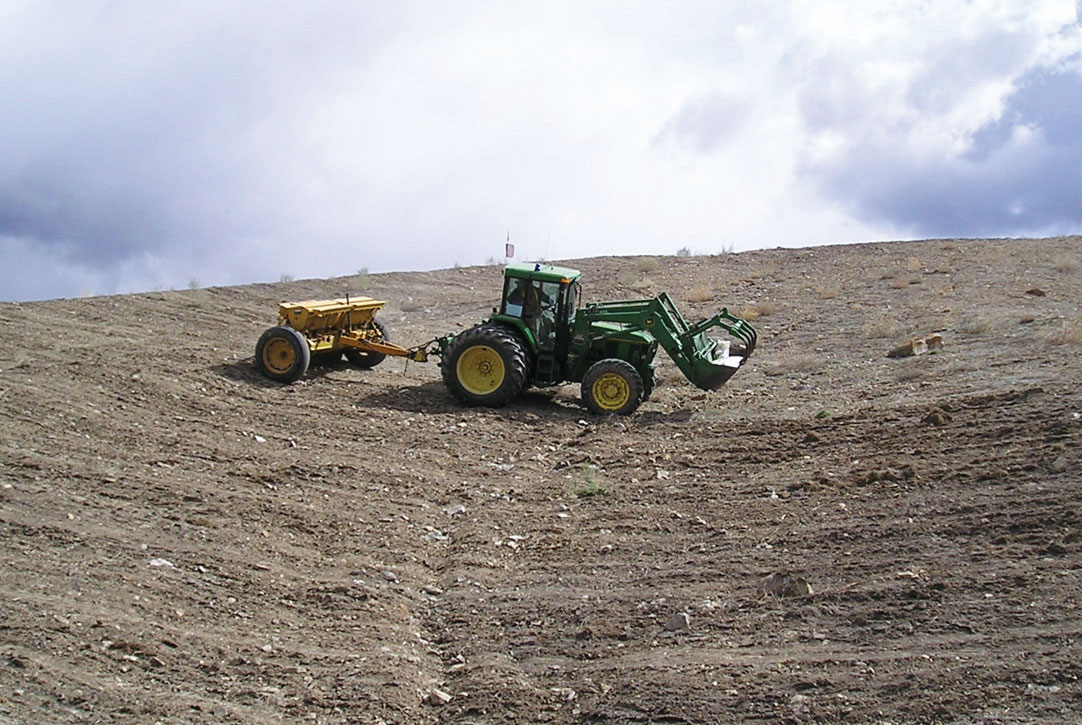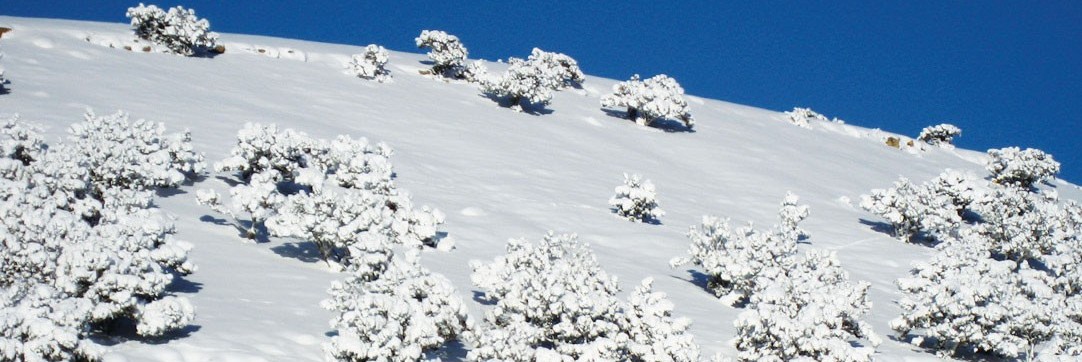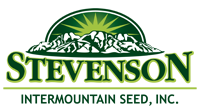Before beginning any reclamation project, it is essential to examine different factors that make the reclamation project unique. Some of these factors include climate, elevation, soils, latitude, potential weed issues, terrain, site history, and intended use.
Jump To Section
Site Suitability

When planning any kind of land restoration or improvement project the actual reasonable capabilities of a particular site must be correctly identified. By not doing so the chances of a successful project might be greatly reduced. By doing so the adapted plant species, proper seedbed, seed planting depths, best seeding method, best seeding time, best seeding rate and management after seeding and other factors can be determined and used to achieve a successful project.
Some of the critical factors that must be identified and adapting plans made for are: climate, elevation, soils, latitude, plant competition (like weeds), terrain, past, current and future land uses, and others.
In the following sections some of these most important factors are briefly discussed so a better understanding of them is possible. This will help in selecting the proper plant species and associated techniques to establish a desirable plant community. More detailed information may be required in some cases to make all the proper determinations.
Climate

The climate and its associated specific characteristic of a proposed seeding project site are one of the most important factors that need to be identified. The most common important factors associated with climate are as follow: Average annual precipitation and during what month does it typically come? Do drought periods occur and if so for how long? Temperatures: extreme high, extreme low, period of frost-free days, etc. Relating to temperature how much of the annual precipitation is snow and how much is rain? Wind: maximum speed, average speed, when and how often?
Elevation/Latitude
The elevation and latitude of a project site is important as it is often used as supplemental information on specific climate information. Example being the higher the elevation, the cooler a site is and often the more moisture it receives.
Plant Competition/Weeds

In order to be most successful in establishing a desirable plant community on a project an assessment of the current weedy plants present and anticipated weed seed already in the soil waiting to germinate or those that might blow in from adjacent sites must be determined and if assessed as detrimental to the projects success must be delt with.
Undesirable plant species or weeds can rob the newly planted species of needed resources such as moisture, nutrients, sunlight, etc.
Often times eliminating all weeds and weed seed is not possible or necessary but efforts to do so to the extent possible is very beneficial in many circumstances. If weeds are a problem selecting desirable species than can compete with them becomes very important. Weed control after planting may also be desirable.
Terrain/Topographic Features
The terrain or topography of an area consists of slopes (steepness), smoothness of slopes, aspects, exposure, and major geographic features. These factors all combine to form mountains, hills, bluffs, ridges, plateaus, lowlands, valley bottoms, gullies, cliffs, streams, lakes, rivers, swamps etc. These factors are important in several ways. For example a planting project on a steep slope would require special erosion control practices. Or a project on a south slope exposure would likely be a more dry and harsh site than a north exposure so the plant species selection might be different.
Soil Information
Knowing various characteristics about the soils present in your project area is very important to help you achieve a successful project. Soil textures, structure, permeability, depth, organic matter content, nutrient content, PH, salinity and other factors are very relevant in the design of your seeding projects. This information is needed not only for species selection but also for many other important project factors that are discussed in the upcoming sections.
Soil Nutrients/Fertilization
In order for plants to establish and grow satisfactorily they require specific nutrients. Soil fertility of these required nutrients of course varies from site to site and what is required by each species of plant can also vary. In large-scale seed planting projects for wildland restoration soil fertilization is not an option because of the cost and often not needed because the existing soil nutrients are sufficient for the desired plants to perform satisfactory.
However, on sites such as mining sites or other soil disturbing activities sites where good topsoil might be limited, soil fertilization may be necessary.
Intensive forage production on pastures may also benefit from fertilization for maximum production.
Also, on some sites of special importance such as a key area where a special wildflower mix is planted soil fertilization may be desirable to achieve the maximum plant growth and flower production.
Soil Moisture/Irrigation
Water is one of the most important physical factors that affect the growth and distribution of plants. The origin of the water that enters the soil for plants use is in the form of precipitation: rain and snow. How much, how often and in what form the precipitation comes greatly affects the species of plants that can grow on an area and how they do. The climate of the area generally determines this.
On large scale projects providing supplemental water by form of irrigation is not practical because of the costs involved. However, on certain projects, which are very important for whatever reason, providing the additional moisture needed for plants to establish and flourish may be desirable. One example may be where a spectacular show of wildflowers is very desirable and adequate natural moisture may not be sufficient to ensure it. Another example would be where maximum forage production is desired in a cultivated field or pasture setting.
